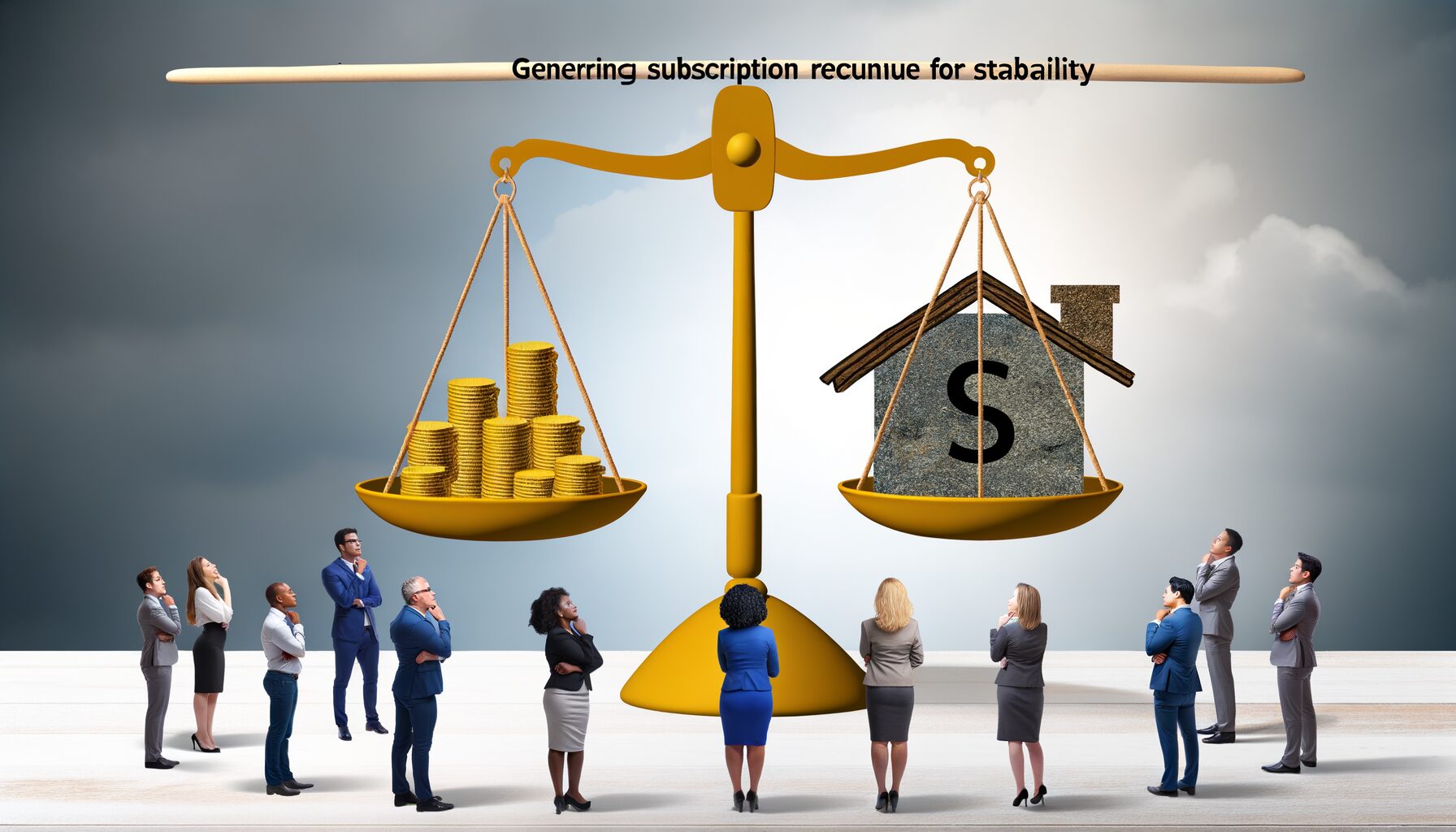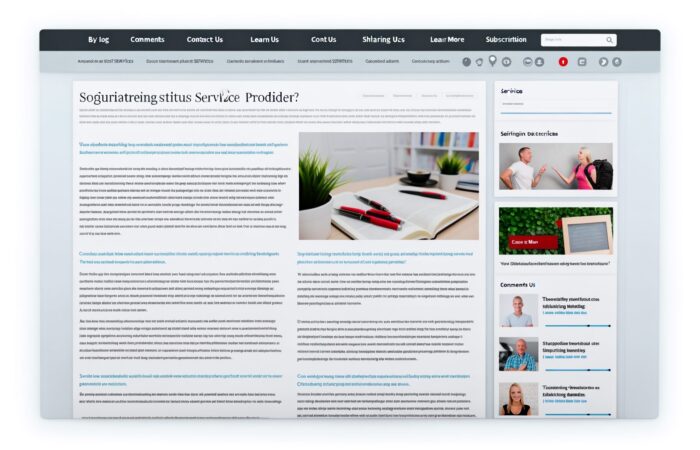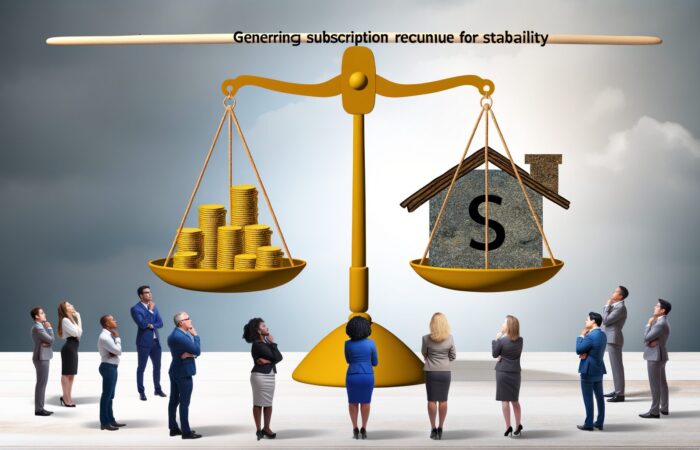Introduction to Product Creation and Sales
Welcome! So, you’ve got an idea that you just know could turn into the next big thing, but you might be feeling a bit overwhelmed about where to start. Don’t worry; you’ve come to the right place. Let’s embark on this exciting journey of product creation and sales together. I’ll guide you through the essentials to transform your brilliant idea from a mere thought into a tangible product flying off the shelves.
From Dream to Reality: A Sneak Peek
Before diving into the nitty-gritty, let’s get an overview of **what this journey involves**. Think of product creation and sales as a thrilling rollercoaster. It will have its ups, where everything is coming together seamlessly, and its downs, with challenges that test your resilience. But with the right steps and a sprinkle of determination, you’ll navigate smoothly through the process.
Why Product Creation Matters
Every successful product, from the smartphone in your pocket to your favorite artisanal candle, started as an idea. The leap from concept to creation centers around solving a problem or fulfilling a need. This journey not only revitalizes the creator but also significantly impacts users’ lives. So yes, creating a product that makes a difference is incredibly gratifying.
The Backbone of Business: Sales
Let’s face it, no matter how innovative or revolutionary your product idea, if it doesn’t sell, it won’t thrive. Sales isn’t just about transaction—it’s about connection. It’s the point where your product touches lives, offering solutions and creating satisfaction. Learning the art of sales is about understanding your audience, building relationships, and establishing trust.
First Steps First: Setting a Solid Foundation
Before setting sail into the ocean of product creation, it’s essential to anchor down your purpose and goals:
- Identify Your Passion: What topic, problem, or niche excites you? Passion drives perseverance.
- Research the Landscape: Investigate the market you’re entering. Who are your competitors? What do potential customers value or complain about?
- Define Success: Outline what success looks like to you. Is it financial gain, customer satisfaction, or industry recognition?
Kickstarting with the Right Mindset
Navigating the creation and sales world requires a resilient mindset. You’re probably going to face setbacks—but that’s standard! Here are a few tips to boost your mental game:
- Embrace Failure: It’s a part of growth. Each setback is a step closer to your goal.
- Stay Curious: Keep learning, whether it’s market trends or customer feedback.
- Be Persistent: Great products take time. Hang in there!
An Exciting Journey Awaits
In this series, you’ll gain insights into everything from identifying market needs to optimizing distribution channels. Whether you’re still doodling on napkins or knee-deep in rough prototypes, foster your creative spirit and enthusiasm. By staying adaptive and learning continuously, you’ll find yourself making strides in the marvelous world of product creation and sales.
So, take a deep breath; we’re about to venture into an exhilarating chapter. Are you ready? Let’s turn those innovative sparks into illuminating flames of success! 🌟
Identifying Market Needs and Gaps
Imagine this: You’re browsing in your favorite store or scrolling through an online site, and you suddenly think, “I wish they had this product!” Just like that, you’ve identified a market need—or even a gap—in the offerings. These moments are golden opportunities for budding entrepreneurs and established businesses alike. But turning that ‘aha’ moment into a successful product requires careful thought and a bit of detective work.
Why Market Research Matters
Before diving into the nitty-gritty of product creation, understanding the landscape is crucial. This step is all about getting to know your potential customers and competitors well. Effective market research will help you spot unmet needs and areas where current products fall short.
Here are some key techniques:
- Surveys: Easy to distribute and compile, surveys can give you insights straight from your target audience. Ask about their preferences, pain points, and what they wish existed.
- Focus Groups: These small group discussions allow for in-depth feedback. They can provide insights into consumer behavior and preferences.
- Competitor Analysis: Look at what competitors are offering. Read reviews on their products to identify recurring complaints or suggestions for improvement.
Spotting Trends and Getting Ahead
Besides understanding current market demands, being aware of trends can put you ahead of the curve. Tools like Google Trends, social media platforms, and industry reports can spotlight emerging desires and shifting consumer behaviors.
Pay attention to:
- Social Media Buzz: Trends often start and gain momentum on platforms like Instagram, TikTok, and Twitter. Keep an eye on what’s gaining traction.
- Industry Publications: Trade magazines and online journals frequently publish industry-specific trend reports and predictions.
- Consumer Feedback: Engage with users on review sites or forums like Reddit. This can offer real-time insight into what consumers are talking about now.
Uncovering Pain Points
To find those untapped market opportunities, you have to dig deeper. Think about where existing products inconvenience customers. These ‘pain points’ can be turned into the very features that make your product a must-have.
Consider the now-famous story of Spanx. Sara Blakely created the product because she was frustrated with the available undergarment options. By addressing a common complaint—uncomfortable and unflattering undergarments—she carved out a new product space that revolutionized the industry.
Consumer Persona Creation
To keep your research grounded, creating detailed consumer personas can be beneficial. These are fictional characters based on real data that represent segments of your target audience. A well-rounded persona includes:
- Demographics: Age, gender, income level, education, etc.
- Behavior Patterns: Shopping habits, media consumption, etc.
- Pain Points and Desires: What problems they’re facing and what they hope to achieve.
When you have a clear picture of who you’re serving, your product development process becomes more focused and efficient. By personalizing your research reports to target these personas, you ensure that your product is solving real problems for real people.
Identifying market needs and gaps is the foundational step that sets the tone for the entire product creation journey. With thorough research and keen observation, you’ll be equipped to forge ahead, confident in your knowledge of where your product will fit and how it will stand out. So, get curious, stay observant, and dig deep—the insights you uncover will be the bedrock of your product’s success.
Developing Your Product Idea
So, you’ve dabbled in understanding your market needs and spotted a promising gap. Awesome! Now we get to the fun part—bringing your product idea to life. This stage is all about finding that perfect balance between creativity and practicality.
Brainstorming and Research
First things first: let’s daydream a little with a solid dose of reality.
- Doodle and Scribble: Got a back-of-the-napkin sketch or a wild idea floating in your head? Scribble it down. No need to be Da Vinci! Just make sure you’re capturing the essence of what you want.
- Market Research Deep Dive: Head over to online forums, social media discussions, or even old-school surveys. What do people really need? How can your idea fulfill or exceed those needs?
- Study Competitors: Analyze what’s already out there. Learn from their hits and misses to refine your idea. You’re looking for that unique facet—the magic ingredient you bring.
Viability Check
You want to fall head over heels for your idea, but it also needs to stand on solid ground. This next step ensures that.
- Feasibility Test: Examine whether your idea can be manufactured or created with the resources you have. Sometimes, a fantastic idea needs fine-tuning to become a realistic project.
- Cost-Effectiveness: Calculate the costs—raw materials, production, labor, etc. Compare these against projected sales volumes and pricing models. You want your innovation to be a viable business opportunity, not an expensive hobby.
- Feedback Loop: Connect with trusted friends, mentors, or even potential customers to get some initial feedback. The more diverse the input, the better.
Solidifying Your Vision
Bring things into sharper focus by starting to define the nuts and bolts of your product:
- Design and Features: Work with designers or take to the drawing board yourself. Detail what your product will look like, its size, shape, and key functionalities.
- Unique Selling Proposition (USP): Clearly spell out how your product differentiates itself from what’s already available. Remember, it’s not just about what it is but how it benefits your customer in an extra-special way.
- Technical Specifications: Document the core technical aspects that will guide the prototyping and production phase. Whether it’s material specifications, technology need or packaging details, getting these nailed down now saves a heap of headache later.
Planning for the Future
Your product’s launch day feels far off, but start planning as early as now.
- Scalability: Envision if and how you’ll be able to scale production when your product invariably takes off. Think about partners you might need, from manufacturing to logistics.
- Customer Journey: Sketch out the end-to-end experience for your customer, from discovering your product to post-purchase support.
- Testing Phases: Establish milestones for testing and iterating your product to perfection through prototypes or beta versions. Build, test, tweak—repeat as necessary!
In essence, don’t rush but don’t overthink either. Developing your product idea efficiently strikes an essential balance; it’s an ongoing dance between creativity and meticulous planning. This process not only sets the foundation for a fantastic final product but also turns you, the creator, from dreamer to smart perfectionist. You’re on the verge of making something truly awesome. Keep at it!
Prototyping and Production
Now that you’ve got an amazing product idea, it’s time to bring it to life! This is where the rubber meets the road – prototyping and production. Before diving in, remember that creating a prototype is all about testing and refining your concept. So, let’s chat about how you can effectively prototype and produce your product, ensuring it’s ready for the market.
Why Prototyping is Important
Prototyping is more than just a preliminary step; it’s an essential part of the product development journey that allows you to:
- Test functionality: Make sure everything works as intended.
- Identify flaws: Catch and rectify potential issues before they go into final production.
- Receive feedback: Show your prototype to potential users and gather invaluable insights.
The Steps to Prototyping
Creating a prototype might sound daunting, but breaking it into steps can make it more approachable. Here are a few key phases:
- Construct a Conceptual Prototype: This could be as simple as a sketch or a 3D digital model using tools like CAD software. This phase helps visualize and adjust the overall design.
- Build a Functional Prototype: Use materials similar to what your final product will have. At this stage, it’s important to have a physical model that performs the core functions of your product.
- Iterate Based on Feedback: You are likely to go through multiple iterations. Gather feedback from test users or stakeholders and refine your prototype accordingly.
From Prototype to Production
Once you’re satisfied with your prototype, the next challenge is preparing for production. Here are crucial steps in transitioning from a working prototype to a market-ready product:
Vet Your Manufacturer
Choosing the right manufacturer is crucial. Look for manufacturers who specialize in your product type, and don’t shy away from asking for samples. Remember, a reliable manufacturer will assist you with the logistics of production and quality control.
Materials and Costs
Different materials mean different costs, and they’ll also influence your product’s final quality. Source your materials carefully, weighing cost versus quality. Don’t forget to factor in the economics of scale – producing in larger batches can often cut down costs.
Create a Detailed Production Plan
A comprehensive production plan will serve as your blueprint. It should include:
- Deadlines for each stage of production.
- Quality control checkpoints.
- Detailed documentation of your product specifications.
Conduct a Small Batch Run
Before fully committing to large-scale production, conduct a small batch run. This allows you to experience the process dynamics and identify any issues without a massive risk.
Quality Control
Don’t underestimate the power of quality control. Implement stringent checks at various stages to ensure consistency and reliability. After all, maintaining a high standard is key to establishing a trustworthy brand.
With prototyping and production thoughtfully executed, your product is well on its way to hitting the shelves – or the store, because your dedication to these steps determines the smoothness and success of your product’s debut.
Branding and Packaging
Alright, you’ve made it this far—high-five! Now comes one of the most exciting aspects: Branding and Packaging. Believe it or not, an eye-catching package and a well-thought-out brand can make or break your product. Let’s dive in!
Building Your Brand Identity
First thing’s first, let’s talk brand identity. This isn’t just about designing a cool logo (though that’s definitely part of it). Your brand identity encapsulates your mission, values, and the emotions you wish to evoke in your customers.
Here’s a solid process to get this going:
- Know Your Audience: Your target market will help shape your brand. Are they young, tech-savvy professionals? Eco-conscious consumers? The clearer your picture, the better.
- Create a Logo: Your logo is the anchor of your brand. It should be memorable, versatile, and relevant to your product and audience.
- Select a Color Scheme: Colors evoke feelings. Choose colors wisely to convey your brand’s personality. Think about what Red Bull’s energetic red and blue says vs. Eco-chic’s calming greens.
- Tone of Voice: Decide how you’ll speak to your customers. Are you formal and professional or casual and fun? Nike’s inspirational tone, for example, sets it apart.
The Art of Packaging
Now onto packaging—the wardrobe your product wears to market. You want your product to stand out on the shelves (or online listings).
Main Considerations
- Functionality: Ensure your packaging is practical. It should protect your product during transit and usage.
- Sustainability: Eco-friendly packaging is a growing trend. Opting for biodegradable or recyclable materials not only helps the environment but can attract a niche customer base.
- Aesthetics: This is where your design chops come in. Your packaging should be visually appealing and reflective of your brand identity.
For example, minimalistic design It simplifies life with less clutter, whereas vibrant, bold designs grab immediate attention—think of the stark contrast between Apple’s minimalist boxes and a box of colorful LEGO sets. Your choice here can influence buying decisions heavily.
Don’t Forget the Details
The devil is in the details, as they say. Even small touches can make a big impact. Consider the texture of your packaging materials, the typography used, and even the unboxing experience. The rise of “unboxing” videos on social media is proof that how a product is packaged can add immense value and intrigue.
Handy Checklist:
Before finalizing your packaging, make sure it ticks all these boxes:
- Durability: Sturdy enough to protect the item inside.
- Attractiveness: A design that’ll catch your audience’s eye.
- Information: Labels and instructions must be clear and concise.
- Compliance: Adhere to any industry-standard guidelines.
Bringing It All Together
Once you’ve nailed down your branding and packaging, you’re well on your way to creating a memorable brand experience. A little attention here—and a splash of creativity there—can pay off big time when your product hits the shelves!
So go ahead, let your brand’s personality shine through. You’ve got this!
Marketing Strategies for Your Product
Alright! So, you’ve got your product ready to go—hooray! But now, let’s talk shop on how to get it in front of people. Marketing might sound like a colossal mountain to climb, but with the right strategies, it could be your next big adventure. So, let’s dive in!
Know Your Audience
Before anything else, you need to know who you’re talking to. Understanding your target audience is the bedrock of any successful marketing strategy. Ask yourself:
- Who are they? (Age, gender, interests, etc.)
- What problems are they looking to solve?
- Where do they hang out online?
- What kind of content do they consume and share?
When you know your audience intimately, you can tailor your message to resonate deeply. This isn’t just about demographics; it’s about understanding their hopes, dreams, anxieties, and pain points. Knowledge is power, my friend!
Create Compelling Content
Content is king. Craft informative, entertaining, and shareable content that gives value to your audience. Think beyond traditional advertisements; educate and engage. Consider these content ideas:
- Blogs and Articles: Establish yourself as an authority in your niche by publishing thoughtful, well-researched blog posts.
- Videos: Video content is hugely impactful. Demonstrate product usage, share customer testimonials, or create catchy, behind-the-scenes clips.
- Social Media Posts: Share bite-sized, compelling stories about your product on platforms like Instagram, Facebook, Twitter, and TikTok.
- Emails: Keep your community engaged, informed, and entertained through well-crafted newsletters and marketing emails.
Leverage Social Media
Social media platforms are more than just places to catch up with friends—they’re powerful marketing tools! Here’s how to utilize them to your advantage:
- Engage with Your Audience: Respond to comments, join conversations, and foster a sense of community around your brand.
- Collaborate with Influencers: Partner with influencers who resonate with your brand’s values to tap into their loyal followers.
- Run Ads: Paid advertising can give your product the visibility it needs. Platforms like Facebook and Instagram offer detailed targeting options to reach your ideal customers.
Harness the Power of SEO
Search Engine Optimization (SEO) might sound technical, but understanding it can give your product significant online visibility. Start with these basics:
- Use keyword research to discover terms your audience is searching for.
- Optimize your website and content to be search engine friendly.
- Build high-quality backlinks to increase your site’s authority.
Great SEO makes your product more likely to appear in search results when potential customers are searching for solutions.
Utilize Email Marketing
Never underestimate the power of a good email campaign. Newsletters, exclusive offers, and personalized emails can keep your audience engaged and drive sales. Remember to:
- Keep content relevant and valuable.
- Personalize messages for better connection.
- Always include a clear call-to-action (CTA).
With people checking their emails multiple times a day, that’s a marketing goldmine you don’t want to overlook.
Measure and Adjust
Last, but certainly not least, continuously track and measure your marketing efforts. Use analytics tools to understand what’s working and what isn’t. Adjust your strategies based on data to continually improve your marketing game. In marketing, agility is key!
So there you have it, a roadmap to kick off your marketing journey. Stay curious, stay flexible, and most of all—have fun with it. Your product is awesome, and now it’s time for everyone else to see that too!
Distribution Channels and Sales Platforms
Alright, so you’ve got your product perfected and ready to hit the market. Excellent! But how do you get it into the hands of customers? Navigating the maze of distribution channels and sales platforms can seem daunting, but don’t worry, we’ll break it down for you.
Choosing the Right Distribution Channel
Distribution channels refer to the path your product takes from the producer (you!) to the consumer. Choosing the right one can significantly impact your sales and customer reach. Here are your main options:
- Direct Selling: This means selling your product directly to the consumer without any middlemen. Online stores, company websites, and brick-and-mortar shops fall under this category. The upside? Higher profit margins because you won’t be sharing the revenue. The downside? You’ll need to handle all aspects of sales, customer service, and shipping.
- Retailers: Retailers buy your product and sell it in their stores or online. This can greatly expand your reach, but it also means lower profit margins since retailers take their cut. Think of major stores like Walmart or smaller specialty shops.
- Wholesalers: These middlemen buy your products in bulk and sell them either directly to customers or to other retailers. This model excels in high-volume sales but typically features even slimmer margins.
- Third-Party Platforms: Platforms such as Amazon, eBay, and Etsy provide access to a broad audience. These channels usually come with a fee or commission per sale but offer ease of setup and a ready-made customer base.
Leveraging Online Sales Platforms
In today’s digital age, having an online presence isn’t just beneficial; it’s essential. Platforms like Amazon, Shopify, and eBay are excellent starting points. But which one is right for you?
- Amazon: An absolute powerhouse, especially in the U.S. Registering as an Amazon seller gives you immediate access to millions of potential customers. The downside? It’s fiercely competitive, so your branding and pricing need to be top-notch.
- Shopify: Perfect for customizing your online store and creating a strong brand presence. Shopify offers a plethora of tools to help you manage inventory, track sales, and market your products. Plus, you can integrate Shopify with other third-party platforms if you wish to expand your sales channels.
- eBay: Excellent for niche markets, collectible items, and even wholesale lots. It has a broad international reach that can be advantageous if you’re looking to test out international distributions without diving into the complexities of global trade right off the bat.
Exploring Brick-and-Mortar Options
While online sales are incredible, never underestimate the power of physical stores. Local shops, supermarkets, or even kiosks in malls can be effective ways to push your products.
Connecting with local businesses and boutiques can also be fruitful, especially if your product aligns with their store’s ethos or target customers. Trade shows and pop-up shops can offer unique opportunities to showcase your product, engage with customers directly, and gauge in-person interest.
Crafting Your Distribution Network
At the end of the day, the best approach is often a hybrid model, leveraging both online and offline channels. Diversifying where and how you sell can buffer your business against market fluctuations and broaden your customer base.
So, roll up your sleeves, take a deep breath, and start mapping out those distribution and sales channels. Remember, every product and market is unique, so choose the channels that best align with your customer needs and business goals.










No Comment! Be the first one.